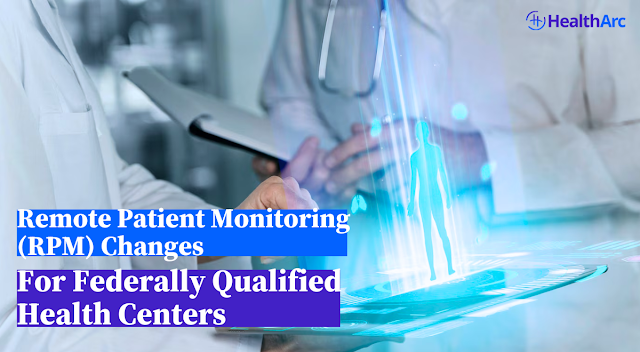How Can Patients Monitor Diabetes Without Extra Clinic Visits?
In-person visits, while sometimes necessary, can feel burdensome for patients with diabetes due to the ongoing commitment the condition requires. Imagine if patients had the option to check their blood sugar levels at home. In this case, remote patient monitoring (RPM) offers a solution.HealthArc offers an RPM platform that improves connection and proactive engagement and reduces disruption in diabetes management for both patients and providers.
What
Is Diabetes Remote Patient Monitoring?
RemotePatient Monitoring Diabetes RPM consists of using blood glucose meters that
interface with the RPM system, which automatically captures and sends data to
the relevant healthcare practitioners. With RPM technologies, healthcare
providers can seamlessly track glucose levels from patients’ homes, rather than
waiting for the next office visit. The benefits RPM offers include the
following:
l Prompt and
efficient reactions to irregularities in blood sugar levels.
l Reduced in-person
visits with ongoing support, supervision, and care.
l Improved levels
of patient participation with the healthcare system through virtual
engagements.
l RPM changes the
diabetes care approach from being reactive to proactively thinking ahead for
both the patient and the healthcare provider.
Why
Should Providers Implement RPM for Diabetes Management?
As
for any chronic disease, remote patient monitoring (RPM) is indispensable in
the current healthcare framework. Here are the reasons:
l Enhanced
outcomes. Continuous monitoring eliminates the possibility of experiencing
severe hypo- or hyperglycemic events.
l Enhanced patient
retention. Regular virtual check-ins encourage continual patient engagement.
l Enhanced
streamlined processes. We more efficiently balance active clinic check-ups and
routine follow-ups.
l Engaged patients now occupy specific times set
aside for in-depth interactions.
l Financially
sustainable solutions. RPM can be reimbursed under Medicare and with many
private insurers making this practice financially sustainable.
For
providers, adopting HealthArc’s RPM platform means enhanced coordination of
care, increased satisfaction, and efficient patient flow: the clinical
operations of the practice run smoothly.
How
Does RPM Support Diabetes Care?
User-friendly
remote patient monitoring platform tailored for chronic diseases, including
diabetes, which is compliant with HIPAA regulations.With RPM, you can do the
following:
l Monitor blood
glucose readings remotely.
l Receive patient
readings automatically through uploads without manual uploads or phone calls.
l Set up custom
alerts for out-of-range values. Instant alerts are sent when a patient’s levels
go beyond safe thresholds.
l Keep patients
engaged with regular virtual check-ins. The automated scheduling of video
consultations, along with feedback sharing through the platform, promotes
active engagement among patients.
l Reduce
hospitalizations and complications. Early detection and timely intervention
prevent emergency room visits and long-term health risks.
When
you incorporate HealthArc into your practice, you eliminate duplicate
administrative work and enhance personalized care. Your patients never have to
wait for care, regardless of where they are located.
How
Can Your Clinic Get Started?
Adopting
RPM for diabetes management doesn't have to be a complicated process. At
HealthArc, we provide complete systems at scale that interface with your
workflows. From patient onboarding to alert configuration, HealthArc seamlessly
transitions your practice to a connected care model with no workflow
disruptions.
![]() Interested in a
live demonstration? Contact us today to see how real clinics are using
HealthArc’s RPM platform for practical diabetes care.
Interested in a
live demonstration? Contact us today to see how real clinics are using
HealthArc’s RPM platform for practical diabetes care.



%20Changes%20for%20Federally%20Qualified%20Health%20Centers%20(1).png)
Comments
Post a Comment